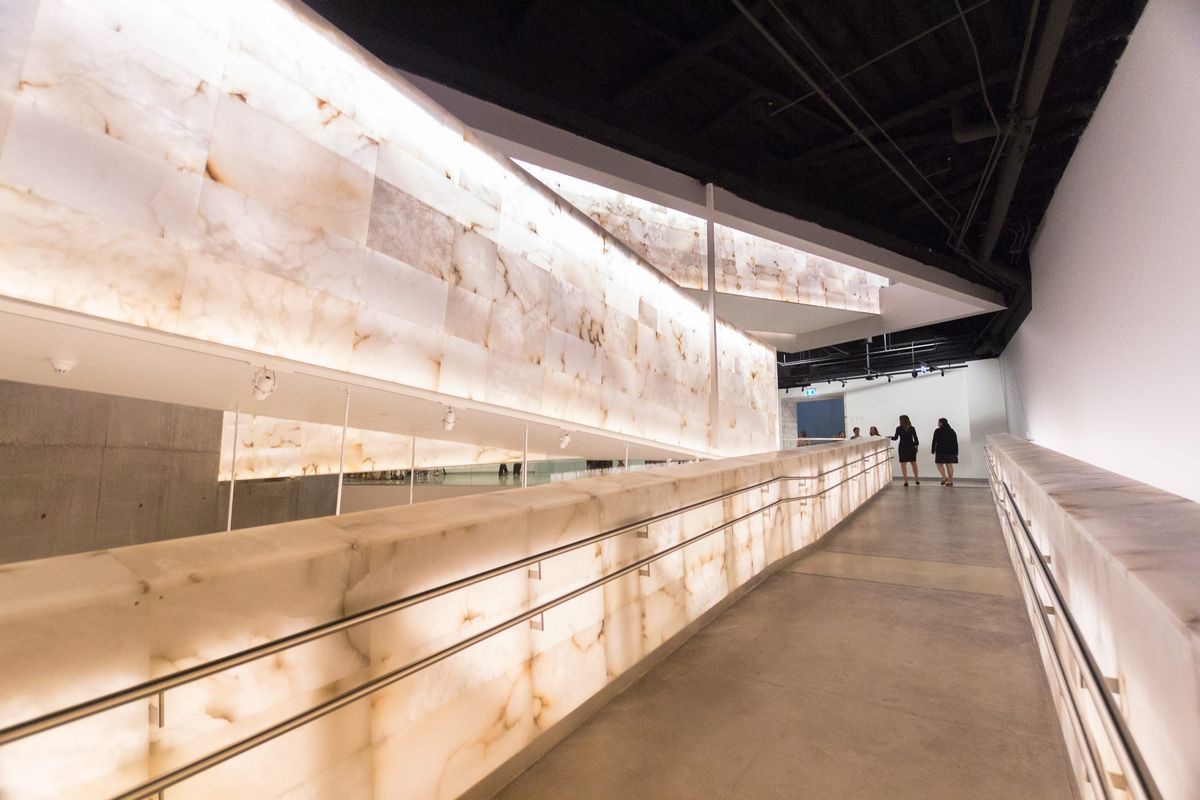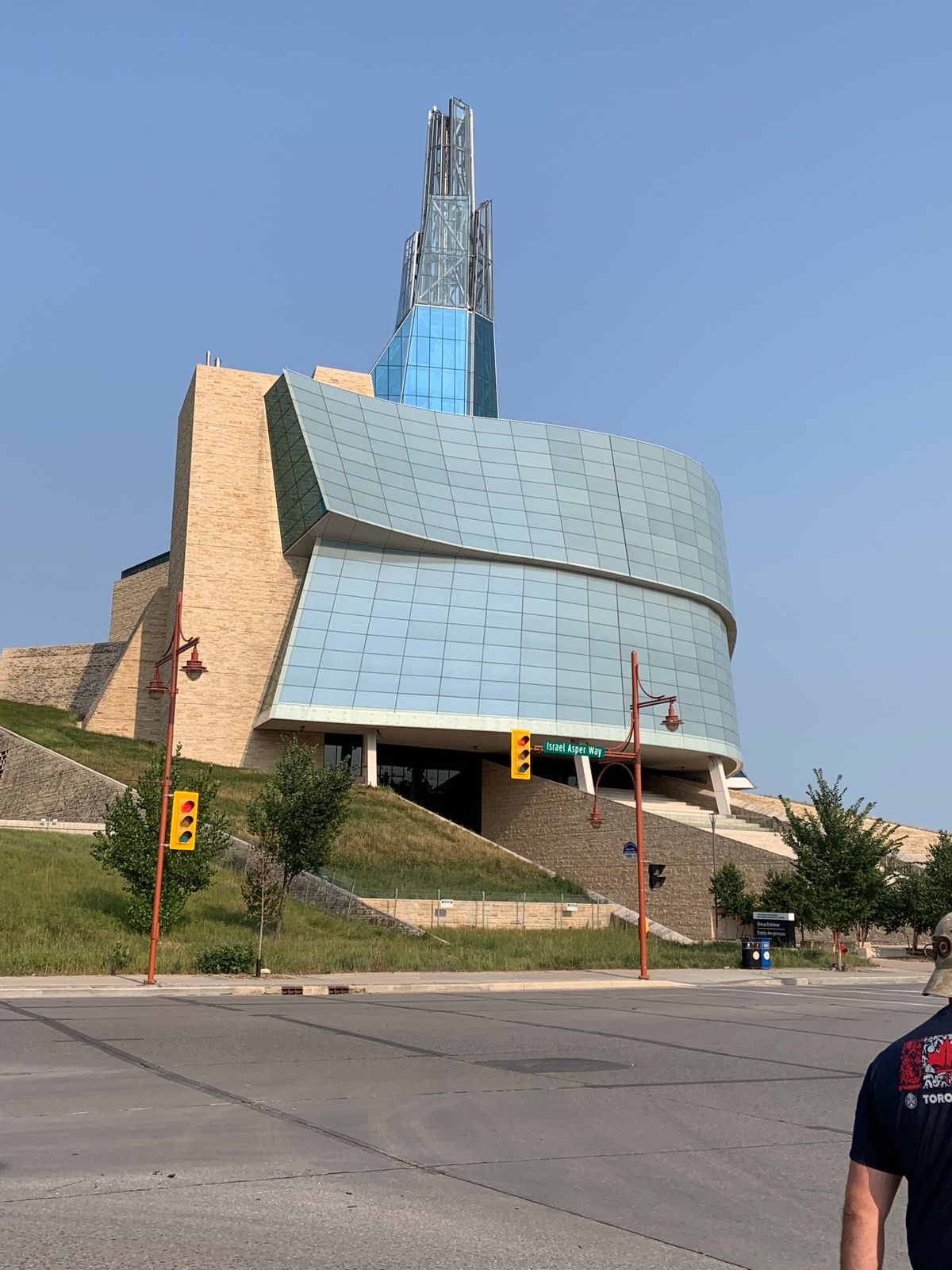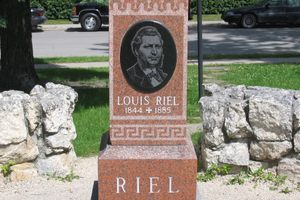About
The Canadian Museum for Human Rights in Winnipeg, Manitoba, is the first museum in the world dedicated to the history and understanding of human rights. But even before it was opened, the museum was generating plenty of controversy.
Back in 2000, the late Israel Asper, a Winnipeg-based Canadian media magnate, came up with the idea of building a museum that would explore human rights, encompassing everything from school bullying to genocide. He provided $20 million for the project from his family foundation, and in 2003 the Government of Canada, the Province of Manitoba and the City of Winnipeg were all on board.
Construction began in 2009, and the museum was officially opened on September 19, 2014. It was the first national museum created in Canada since 1967. It was also a big deal for Winnipeg, as the Canadian Museum for Human Rights was the first new national museum in Canada in almost 50 years to be built outside the national capital, Ottawa.
Several activist groups were present at the opening, which came as no surprise. The museum had courted controversy even before the first stone was laid. Archaeological excavations of the proposed building site had recovered more than 400,000 artifacts, some dating as far back as 1100 A.D., which posed a number of problems.
Arguments were raised against the construction of the museum on a site so rich in Aboriginal artifacts, with some groups claiming that the entire area was an Aboriginal burial ground. But in more than 50 separate excavations of the site since the 1950s, thousands of artifacts had been discovered, but no human remains. The museum’s counterarguments held, and the project went ahead.
With the opening of the museum, more controversy followed. The museum’s 10 core galleries examine a range of topics related to human rights, with themes including “Indigenous Perspectives,” “Canadian Journeys” and “Examining the Holocaust.” But having separate galleries dedicated to the Holocaust and the persecution of Aboriginal peoples in Canada didn’t sit well with certain groups, including the Ukrainian Canadian Congress, Canadians for Genocide Education and the German-Canadian Congress.
These and other associations have argued that special attention should not be given to two violations of human rights above others, pointing at historic abuses such as the Ukrainian Famine of 1932 and the internment of Ukrainians and other Europeans in Canadian camps between 1914 and 1920 (subjects that are covered in the museum, but not in their own dedicated galleries). Controversies regarding the museum’s content continue today.
Still, the museum has largely been regarded as a success, despite the controversies. And beyond the informative and broad-ranging exhibitions, there’s also the unique architecture to consider.
The Canadian Museum for Human Rights was designed by American architect Antoine Predock, who took his inspiration from the Canadian landscape. He certainly didn’t hold back when describing his vision: “Carved into the earth and dissolving into the Winnipeg horizon, the abstract ephemeral wings of a white dove embrace a mythic stone mountain of 450 million-year-old Tyndall limestone. The structure is a timeless landmark for all nations and cultures - a symbolic apparition of ice, clouds and stone set in a field of sweet grass.”
Ice and doves aside, it’s certainly an impressive building. The interior is also designed to take you on a journey of sorts. After passing through the dark stone entranceway, visitors proceed to the Great Hall, designed to evoke memories of ancient gatherings. Then through the Garden of Contemplation, before ending their voyage with an ascent of the Tower of Hope, which offers panoramic views across the city and the natural landscapes beyond.
Related Tags
Know Before You Go
The Canadian Museum for Human Rights is located at 85 Israel Asper Way in Winnipeg, Manitoba. It’s about 6 miles east of Winnipeg’s James Armstrong Richardson International Airport. Winnipeg Transit has 33 routes that can take you to the museum, with stops on Israel Asper Way and nearby on Main Street and William Stephenson Way. You can also take the train and get off at Union Station, which is just a short walk from the museum. The museum is open Tuesday to Sunday from 10 a.m. to 5 p.m. (and until 9 p.m. on Fridays). General admission is $18; children 6 and under can enter for free.
Published
February 8, 2019
Sources
- http://gagarin.is/work/canadian_museum_for_human_rights/
- http://www.predock.com/CMHR/CMHR.html
- https://www.architectmagazine.com/design/buildings/canadian-museum-for-human-rights-designed-by-antoine-predock-architect_o
- https://nationalpost.com/news/canada/canadian-museum-for-human-rights-opens-amidst-controversy-and-protests
- https://www.thecanadianencyclopedia.ca/en/article/canadian-museum-for-human-rights
- https://www.designboom.com/architecture/antoine-predock-architects-canadian-museum-for-human-rights-winnipeg/
- https://www.designbuild-network.com/projects/canadian-museum-for-human-rights-winnipeg/
- https://www.theguardian.com/travel/2014/sep/26/canadian-museum-for-human-rights-opens-in-winnipeg







































